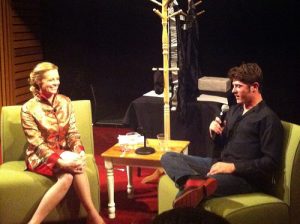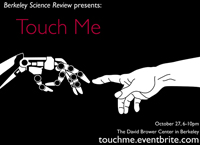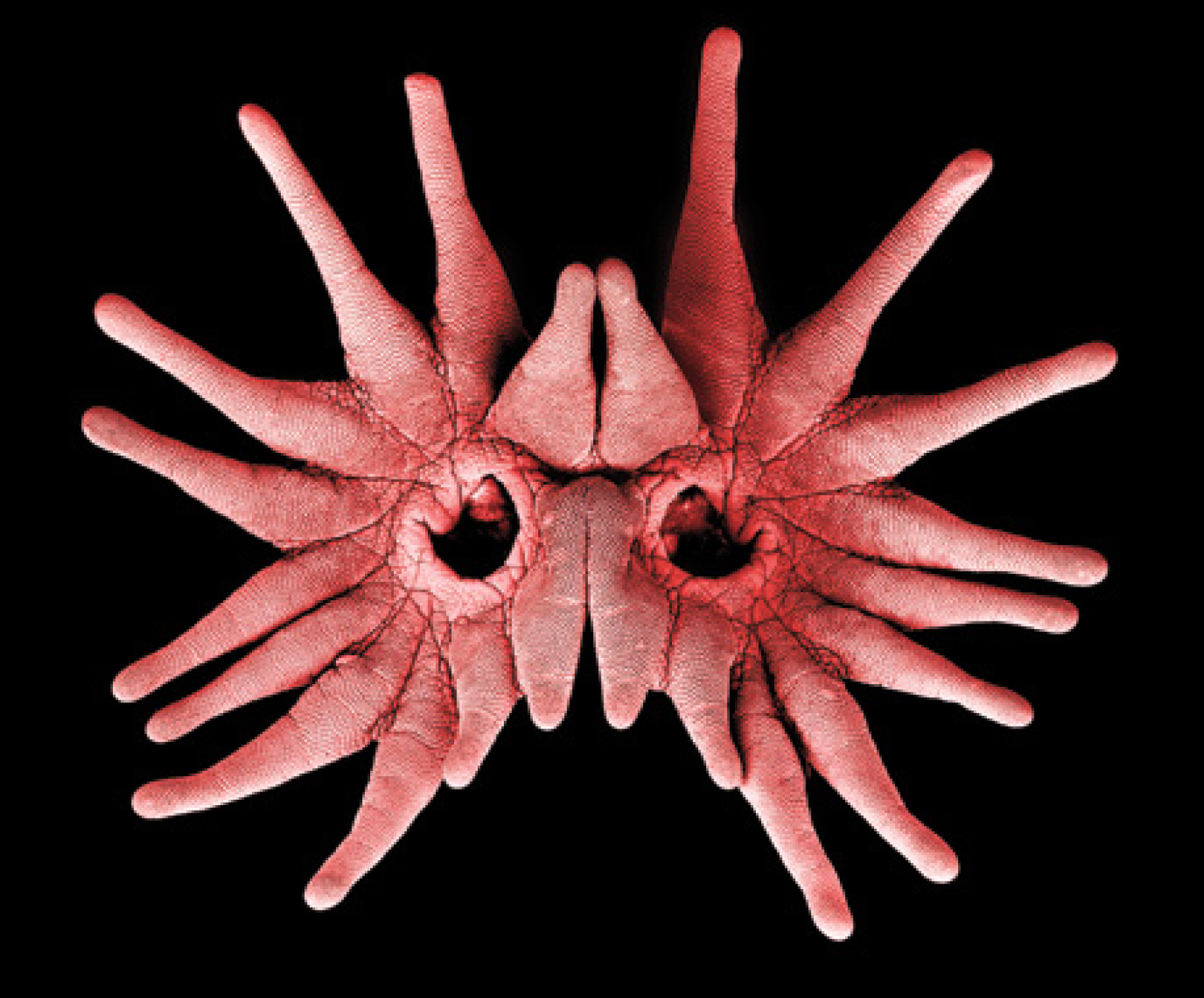A Touching Evening
This post is cross-posted on Berkeley Science Review.
For those of you who read the BSR blog, you may have noticed that we’ve been a bit obsessed with “touch” of late. So interested, in fact, that we decided to have an entire evening of events, interviews, and demonstrations to dive into one of the most fundamental senses that we all possess. Touch Me was the first BSR “live event”, an event that was hosted by the fantastic Dr. Kiki Sanford in collaboration with the Bay Area Science Festival. It was a real-time exploration of the many facts and facets that underly the sense of touch.
So why touch? Well, for starters, imagine a world without sight. Seems pretty easy—just close your eyes. Imagine a world without hearing. Yup, hands over the ears, not too tough. Now imagine a world without touch? Pretty hard huh?
We often take it for granted, but touch is fundamental to any living creature. It is perhaps the first method that we have to interact with the world, and it is often the last thing that remains before we leave it. Touch allows us to communicate with others, to navigate, to give and receive comfort. It is one of the most intimate acts we can perform, informing someone that we are here, with you, right now.
It also makes a pretty great interpretive dance. But more on that later…
A nose for touch
So touch is pretty important, but is it interesting? Turns out that the answer is yes. Perhaps due to its fundamental role in living systems, you can learn quite a lot about a species by understanding the role that touch plays in their life. For example, take the star-nosed mole. Burrowing underground in rural Pennsylvania, this little creature has little use for eyes and ears. So how do you navigate without seeing or hearing? You evolve one of these:
This appendage is an incredibly sensitive organ that the star-nosed mole uses for touch. During our evening of touch, we spoke with Lydia Thé, a graduate student that studies touch mechanisms at UC Berkeley. Her lab uses the Star Nosed Mole as a model organism to dive into the low-level tools that our bodies use to interact with the world.
The trick lies in turning a physical movement (such as stretching, bouncing, pushing, etc) into electrical code that our nervous systems can understand. By studying organisms such as the star-nosed mole, we’ve discovered that there are actually relatively few ways that our bodies accomplish this at the molecular level. I could explain this to you, but why use words when you can use the universal language of interpretive dance…
(For this one, a big thanks goes out to Kyle Jay, a graduate student in the Blackburn lab at UCSF. I’ll never look at an ion channel the same way again.)
Touch, it’s not just for sentient beings
It turns out that touch is also important for artificial life too. Just as people have to feel their way through the world, so too do robots. We heard from Benajmin Tee, a graduate researcher at Stanford that is working on engineering touch-sensitive robotic skin. It turns out that biological skin is quite useful—providing a flexible, self-repairing material that can transfer information about things like touch with relative ease.
Tee mentioned that one of the biggest challenges to building electronic skin is finding the right balance between durability and flexibility. Sure, we’d be nearly impenetrable if our skin was made of something like metal, but we’d also be far less sensitive to physical changes in the world around us. Roboticists such as Tee—having the freedom to choose any material they want for their creations—must understand the importance of sensitivity and the role that touch plays in our lives.
Communicating through touch
To cap it all off, the evening got a bit emotional with Daniel Cordaro explaining the power of touch in conveying ideas and emotions. It turns out that touch is incredibly important in developing relationships and bonds with those around us. It’s even essential to have physical touch in a developing infant. However, this doesn’t mean that all people touch equally—Cordaro also noted a few fascinating studies that found huge differences in the amount of touching between different cultures (and potentially explained why Americans are so awkward about physical contact sometimes). Did you know that French people touch one another several times more often than Americans do in everyday conversation?

We left the evening feeling gratified (touched, you might say), by all of the amazing people that came to our event, both to present as well as to learn. Whether it was researchers from top-notch universities, science enthusiasts from all over the Bay Area, or even roboticists attempting to give humans superpowers, the evening was full of the science awesomeness that the BSR lives for.
However, perhaps most incredible is that our speakers for the evening—from touch biology to touch emotions—were graduate students. As an organization that is itself organized by graduate students, we’re continually amazed at the amazing things that our nation’s next best and brightest are able to accomplish. It was because of all of you that Touch Me was such a success, a testament to the incredible potential of our nation’s student scientists.
Finally, we’d be silly not to recognize the single most important person involved in Touch Me. Georgeann Sack, fellow BSR editor and post-doc at UC Berkeley, took the seed of an idea and grew it into the wonderful event that I’m talking about here today. Thank you so much, Georgeann, for all the deal-making, brainstorming, event-planning, and drink-procuring that made Touch Me so special. And all while doing post-doctoral research…that’s what science is all about!

